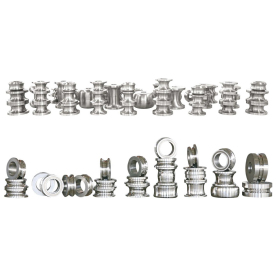[Heat-Resistant HSS Blade]Exploring the Benefits and Applications of Heat-Resistant HSS Blade in Modern Machining Industries
News 2024-8-24
In the world of machining, the right tools can make all the difference between precision and mediocrity. Among these tools, the Heat-Resistant HSS (High-Speed Steel) Blade has emerged as a game changer, significantly enhancing efficiency and accuracy in various industrial applications. Understanding the advantages and applications of heat-resistant HSS blades can provide insights into why they are increasingly favored by engineers and machinists alike.
High-Speed Steel has long been a popular material used in cutting tools due to its high wear resistance and toughness. However, with the evolution of manufacturing processes and the demand for higher-speed machining, traditional HSS suffered from limitations concerning heat resistance. As the name suggests, heat-resistant HSS blades have been specially formulated to withstand higher temperatures, thus maintaining their hardness and cutting efficiency for more extended periods.
One of the key advantages of heat-resistant HSS blades is their ability to maintain cutting edge integrity during prolonged operations. In traditional machining scenarios, excessive heat generated from friction can lead to tool wear and deformation. This compromises precision and often leads to costly downtimes for tool changes. Heat-resistant HSS blades are engineered to withstand these elevated temperatures, significantly extending their lifespan. This durability is particularly beneficial for industries engaged in high-speed machining, such as aerospace, automotive, and manufacturing sectors.
Moreover, heat-resistant HSS blades exhibit improved thermal conductivity properties. This feature allows for efficient heat dissipation during cutting operations, keeping the blade cooler and preventing the unwanted dimensional changes associated with thermal expansion. As a result, manufacturers can achieve tighter tolerances and better surface finishes. This precision is crucial for applications requiring high accuracy, such as in the production of components for aerospace engines or medical devices.

Exploring the Benefits and Applications of Heat-Resistant HSS Blade in Modern Machining Industries

Exploring the Benefits and Applications of Heat-Resistant HSS Blade in Modern Machining Industries
Furthermore, advancements in coating technologies have further enhanced the performance of heat-resistant HSS blades. The application of coatings such as titanium nitride, titanium carbonitride, and zirconium nitride can improve surface hardness, reduce friction, and increase oxidation resistance. These coatings can drastically improve the functional lifetime of the blade, making them an appealing option for demanding machining tasks.

Exploring the Benefits and Applications of Heat-Resistant HSS Blade in Modern Machining Industries
In conclusion, the heat-resistant HSS blade represents a vital technological advancement in the realm of machining. Offering enhanced durability, thermal conductivity, cost-effectiveness, and application versatility, these blades address the challenges faced by modern manufacturers. As industry demands continue to evolve, tools like the heat-resistant HSS blade will be at the forefront, enabling precision machining to meet the rigorous standards of various high-performance sectors. Embracing such innovations will undoubtedly pave the way for a new era in manufacturing excellence.
